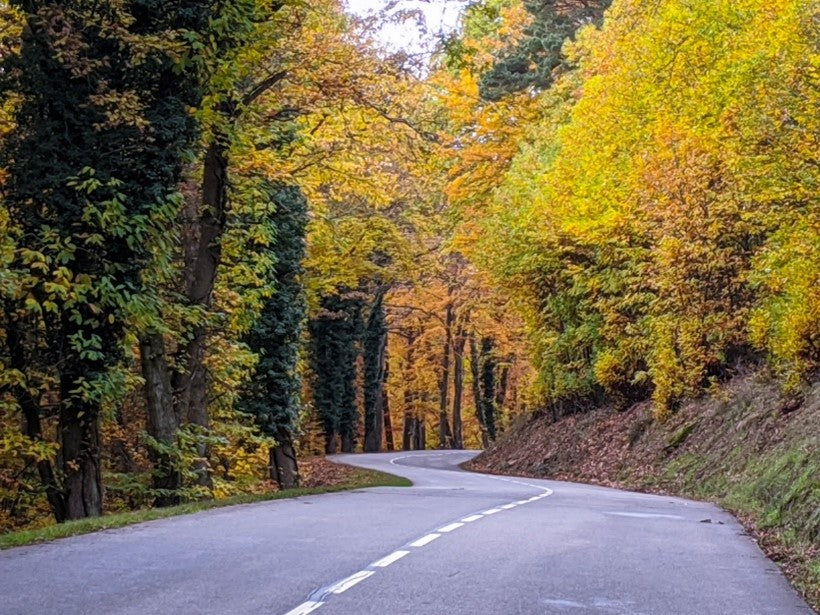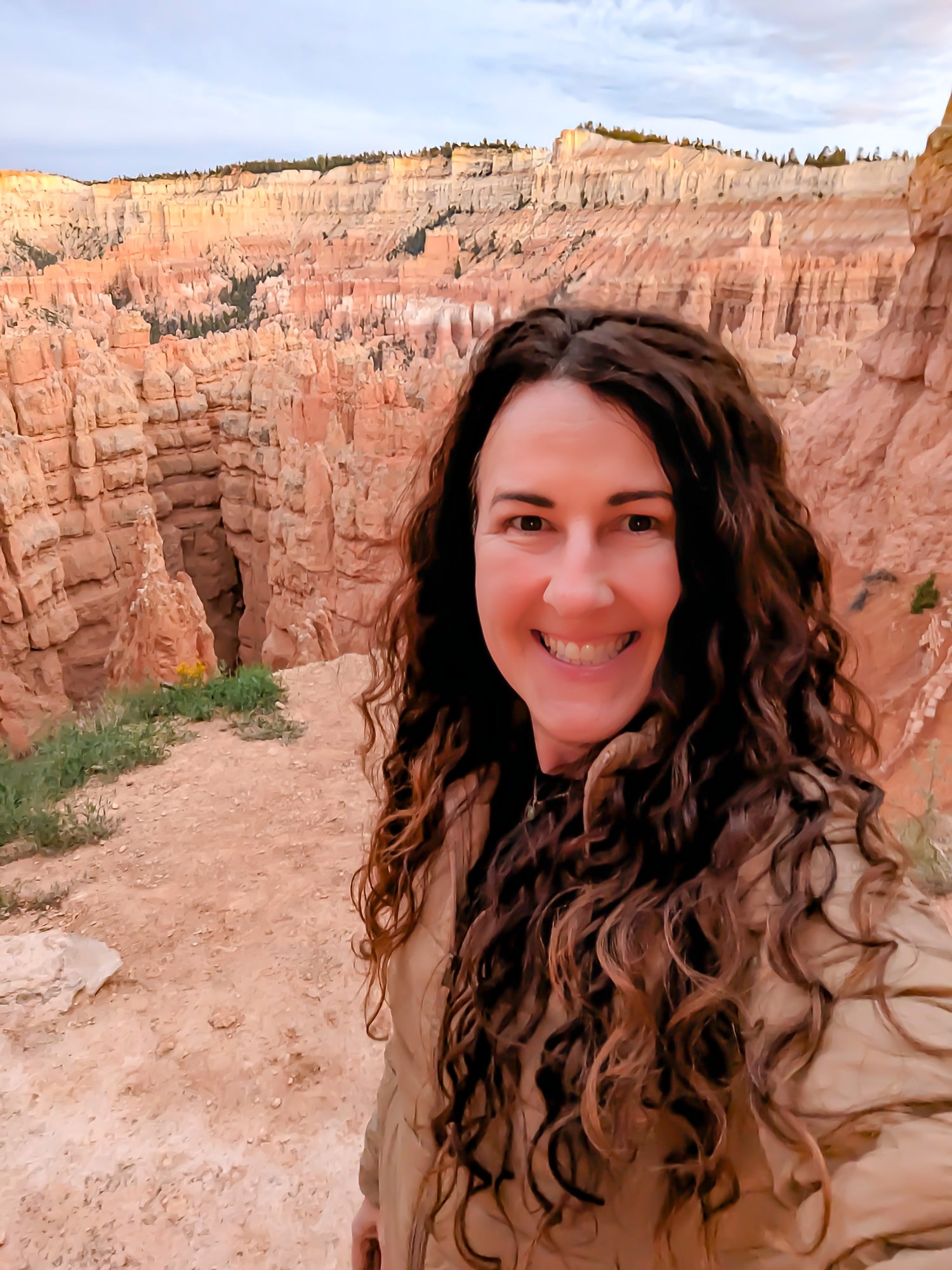The first time I rented a car in Europe was in the little town of Colmar, France. I found the deal by looking on AAA Travel Car Rentals before I left on my trip. I am a AAA member and know that often you can get great deals by booking a car through their website.
While conducting my research, I found that if I rented from the train station in Colmar (where I would be arriving from Basil), the price was like double from renting at another location across town. Since I wasn’t renting a car until later in my stay, it didn’t matter if I was at renting at the train station or not. So, I was willing to take the walk to the other location to save more than $100.
Picking up the Car at Hertz in Colmar, France
Everything about the experience was like renting a car in the United States. With the exception that the employee behind the counter spoke very little English. It would have been a challenge communicating pre-smartphone days. However, all I had to do was use my google translator app and we understood each other just fine.
The main thing I wanted to get across when I talked to her was that I wasn’t going to be dropping the car off during business hours. So, I needed to know their polices. Did they have a drop box? Was I just to park the car in their lot or on the street?
Their policy did turn out to be a little strange: I was to leave the car locked on the street and then return the keys to a receptionist at a hotel that was “only like a 15 minute walk.” Very odd. Usually, when you drop off a car after hours there is just a slot to drop the keys into the car rental building or some kind of drop box.
Brushing up on Road Rules
Before I picked up the car, I brushed up on signage that I might encounter along the way. I highly recommend doing that. It made my driving experience a lot more simple since I had a good idea of what the various pictorial signs meant. I knew not to drive into restricted areas, because I knew what that sign meant.
The number one thing you’ll definitely encounter more of while driving in this area than in the US is roundabouts. Many people are not familiar with how they work, but I’m lucky enough to have a variety of roundabouts in my home area, so they weren’t that hard. If you’re unfamiliar with them at all, I highly recommend you check out the following YouTube video to learn the rules. Keep in mind that the rules are opposite if you are driving in the UK!
Parking Tips
Most of the towns I drove to were small villages in the Alsace region of France. I could pretty much park anywhere outside of the tiny cobblestone streets. Before I left the car, I took pictures of where I parked, making sure the location stamp was turned on in my metadata. I also took pictures of the surrounding area. Later, when I returned to the car, I could just plug in the coordinates of the car and have google maps give me the walking directions back to its location. This proved to be handy several times on the trip.

If you park in a city, just know that most streets will be metered. They will not have the meters right next to the cars. Rather, the meter will be a large machine on the corner or a short distance down the street.
I also found that when I visited the town of Freiburg im Breisgau, Germany, it made more sense to drop the car at the free park n ride and then take the tram into town. If you do something like this, don’t forget to do the following:
- Take a pic of where you parked your car in the lot
- Take a pic of the name of the station
Without this information, you’re going to find it very difficult to make it back to your car after you sightsee—no matter what park n ride you use anywhere! I only mention these tips because if you’re anything like me, you get so focused on where you are going next that you can forget about taking note of where you are right now (because you need to return here!)
I also found that in Colmar, where I was staying, there was not much free parking in the daytime. So, before I rented the car, I looked around at the parking near my Airbnb to see what hours you were allowed to park the car. I found parking in front of a museum that had free parking during the nighttime, and then you had to start paying by 7 or 8 am. So, what I did was make sure that I was on the road by that time and then didn’t return until the free parking for that street had started back up in the evening. This tip might help you in wherever you’re trying to find parking near your accommodations, too.
Necessities for the Drive
I made sure I had my car charger with me for my phone. I would have been totally in big trouble without it because I relied on it for the majority of my needs: my music, my directions, and my camera!
I also brought along snacks to eat while driving. I drove quite a lot on this trip, as I usually do when I rent a car with unlimited miles, and so it was nice to have a few snacks with me so I didn’t have to look for too many places to stop for food. I also brought along my refillable water bottle to stay hydrated and tried to refill it as many places as I could en route.

Favorites on this Multi-Day Road Trip
- Colmar, France is on the west side of the Rhine and so it was an easy drive across a bridge to get to Germany. I did this often during the three days I had the car.
- In the early mornings, the fields near the Rhine are blanketed in a layer of fog, at least in early November they are! It cleared up later in the day, but it was fun to drive through this misty scene while it lasted.

- Driving on Germany’s Autobahn was a dream come true. However, next time I’d like to actually to be behind the wheel of an awesome sports car instead of a Rinault Clio!
- I loved all the little fairytale villages that I visited in Alsace. Each one felt like I was walking into Belle’s hometown on Beauty and the Beast.

- Driving through the Black Forest was really amazing for me considering some of my family hails from this region. I took the cuckoo clock road, bought some obligatory cuckoo clocks to ship home, and ordered up a slice of black forest cake to eat on the spot. Then, I drove on through the forest on mountain roads lined with fall foliage and snow all the way to the spa resort town of Baden Baden just in time to start heading west into the sunset. It was the perfect drive in every way.

- I took the advice of some fellow travelers and drove out to the American cemetery in Epinal, France. I visited just days after Veterans Day, so there were still many flowers on the graves. It was a peaceful place and I’m glad I got to pay my respects by visiting it.

Returning the Car
It was an easy process returning the car. Like the lady said, all I had to do was find street parking on the street in front of the rental office and then after locking it up, just walking to the hotel to return the key.
However, the hotel wasn’t just 15 minutes away. It was more like twice that and I’m a fast walker. I also didn’t really enjoy the fact that I was walking along a dark street alone in a more industrial part of town. That I could have done without, but I just walked fast and made it to the next street which was more trafficked and well-lit and I felt just fine.
Overall Experience
My first experience renting a car in Europe couldn’t have been more positive. I loved having my own wheels to explore the beautiful countryside. It would not have been the same without it. I highly recommend doing the same whenever you’re staying in an area with small towns and villages and large spaces in between.
FAQ: Renting a Car in Europe - Tips and Experiences
Q1: How did you find your first car rental deal in Europe?I used AAA Travel Car Rentals to secure a great deal on a car rental for my trip to Colmar, France. Being a AAA member helped me find competitive rates.
Q2: Why did you choose a rental location across town instead of the train station?Renting from the train station was significantly more expensive, so I opted for a location elsewhere in town, even though it required a short walk. This decision saved me over $100.
Q3: What was the process like when picking up the rental car at Hertz?The experience resembled renting a car in the US. Though the employee spoke limited English, using a translation app helped us communicate effectively. I clarified their policies for dropping off the car outside business hours.
Q4: How did you prepare for driving in Europe?Before picking up the car, I refreshed my knowledge of road signs to simplify my driving experience. Roundabouts were a common feature, and I recommend familiarizing yourself with them using online resources.
Q5: Did you encounter any parking challenges during your trip?Parking in small villages was usually straightforward, except on cobblestone streets. I took photos of my parking spot and its surroundings to ensure I could easily find my car later.
Q6: What advice do you have for parking in cities?In city areas, parking was often metered, with meters located at a distance from the parked cars. When using park and ride options, remember to photograph your car's location and the station name for easy retrieval.
Q7: What essentials did you have for your road trip?Having a car charger for my phone was essential, as my smartphone served as my music player, navigation tool, and camera. I also brought along snacks, a refillable water bottle, and took breaks as needed.
Q8: What were some of your favorite experiences during the road trip?Driving from Colmar to Germany was a breeze across the Rhine. Foggy morning drives and traversing Germany's Autobahn were memorable, as were visits to charming villages and the scenic Black Forest.
Q9: How was the process of returning the rental car?Returning the car was easy; I parked on the street and dropped the keys off at a hotel reception, as instructed. However, the hotel's distance was greater than expected, and I advise being cautious when walking alone in less lit areas.
Q10: What was your overall experience renting a car in Europe?My first European car rental was a highly positive experience. Having a car to explore the countryside and visit small towns enhanced my trip. I recommend renting a car for similar travel situations with a mix of towns and expansive areas.


